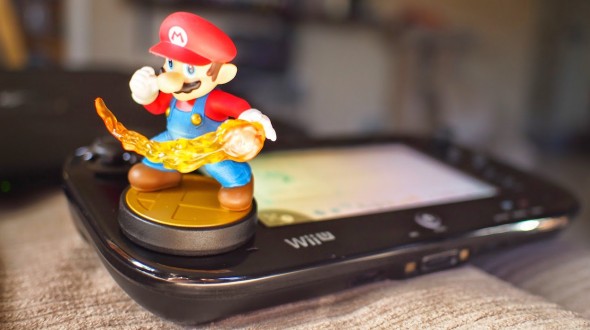
One of the big things launching alongside the Wii U version ofSuper Smash Bros. this month is Nintendo’s entry into the Toys to Life gaming category. Amiibo are very nice-looking Nintendo figurines with special NFC chips in their bases that interact with the Wii U and the 3DS, effectively making it so you can take your own customized version of your favorite characters and bring them with you from game to game.
Where Nintendo has the potential to thrive over the competition is the ability to insert Amiibo into multiple games by the end of the year, whereas Skylanders andDisney Infinity are limited to their respective game franchises. That advantage comes at a price, specifically in the less-than-simple setup and use of the individual Amiibo characters being offered by Nintendo.When playing Disney Infinity or any of the Skylanders games, users need only set their chosen model on the included NFC reader to begin playing the game. You can go from removing the figurine from the package to playing the game in seconds, and when you’ve leveled up your characters completely, you can even trade with other players without issue. These figurines aren’t account-bound in any way, and in situations where you’re moving a character from a previous generation of the game to an updated version, the user does absolutely nothing in order to play their favorite characters. Amiibo are set up a little differently, and as a result there will undoubtedly be some confusion at first.
Amiibo are not ready to play out of the box. The first thing you need to do is register your figurine with an account, which allows you to give the figurine a nickname and binds that figurine to your game saves.
Amiibo do nothing at all when you tap them to the Wii U gamepad, unless you are in the Amiibo settings that were added to the console in the last update. As long as you have a Nintendo Network ID already setup, the rest is fairly straightforward.Now that you’ve registered the Amiibo with your account, you have to add it to your game. In Super Smash Bros. this means heading to the Amiibo section in the game menu and tapping the figure to your GamePad once more. The character is now added to your game, and from here you can modify your Amiibo as you see fit. When you go to actually engage in a Smash, you have to tap the Amiibo to the gamepad again to signal that you want to play with or against your Amiibo.
Nintendo could have made this a lot easier by making it so the Amiibo are detected from anywhere in the system with a set of instructions telling users what to do next. Outside of directly discouraging sharing, it’s not entirely clear why Amiibo need to be account bound, but this is how Nintendo has decided to do things. The upside is the ability to use a single Amiibo across multiple games, but it seems like that functionality dramatically increased the complexity of an otherwise simple system.